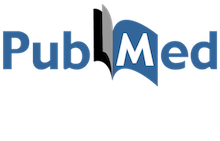Automated Adjustment of the Fraction of Inspired Oxygen (FiO2) and the Time Spent in Normoxemia in Preterm Infants
DOI:
https://doi.org/10.20344/amp.22397Keywords:
Infant, Premature, Hyperoxia, Hypoxia, Oxygen Inhalation TherapyAbstract
Introduction: The challenge of maintaining normoxemia in preterm infants undergoing respiratory support and oxygen therapy has led to the development of closed-loop automatic control systems for FiO2. The aim of this study was to assess the effectiveness of these systems in maintaining SpO2 within a target range (90% - 94%) in preterm neonates receiving supplemental oxygen.
Methods: We conducted a single-centre prospective study over a three-year period (2020 - 2023) including preterm infants with a gestational age < 33 weeks who received supplemental oxygen within the first 24 hours of life and either invasive or non-invasive respiratory support. The closed-loop automatic control of FiO2 used was the Predictive Intelligent Control of Oxygenation feature on Fabian® ventilators. Two groups were randomized and compared, one receiving automatic plus manual control of FiO2, and the other receiving routine manual control. Uni- and multivariable regression analyses (linear or Poisson) were used to evaluate the association between the use of closed-loop automatic control of FiO2 and the parameters of manual adjustments, hypoxemia, hyperoxemia, and normoxemia.
Results: The study included 89 patients, of which 45 received automatic plus manual control of FiO2 and 44 received routine manual control. The first group required fewer manual adjustments of FiO2, experienced fewer episodes of hypoxemia and hyperoxemia (p < 0.002), and spent more time with SpO2 within the target range (p < 0.001), compared to the second group. After adjustment for confounding, the total time spent in normoxemia was higher when in automatic plus manual control of FiO2 (β = 81.5; 95%CI: 47.9 - 115.2, p < 0.001).
Conclusion: The use of closed-loop automatic control of FiO2 seems feasible and was associated with fewer episodes of hypoxia and hyperoxia, thereby maintaining SpO2 within normal limits for longer periods. Additionally, it has been shown to be associated with a reduction in manual interventions.
Downloads
References
Carlo WA, Finer NN, Walsh MC, Rich W, Gantz MG, Laptook AR, et al; SUPPORT study group of the eunice kennedy shriver nichd neonatal research network. Target ranges of oxygen saturation in extremely preterm infants. N Engl J Med. 2010;362:1959-69.
Stenson BJ, Tarnow-Mordi WO, Darlow BA, Simes J, Juszczak E, Askie L, et al; BOOST II United Kingdom Collaborative Group; BOOST II Australia Collaborative Group; BOOST II New Zealand Collaborative Group. Oxygen saturation and outcomes in preterm infants. N Engl J Med. 2013;368:2094-104.
Sweet DG, Carnielli V, Greisen G, Hallman M, Ozek E, Te Pas A, et al. European consensus guidelines on the management of respiratory distress syndrome - 2019 update. Neonatology. 2019;115:432-50.
Bolivar JM, Gerhardt T, Gonzalez A, Hummler H, Claure N, Everett R, et al. Mechanisms for episodes of hypoxemia in preterm infants undergoing mechanical ventilation. J Pediatr. 1995;127:767-73.
Hütten MC, Goos TG, Ophelders D, Nikiforou M, Kuypers E, Willems M, et al. Fully automated predictive intelligent control of oxygenation (PRICO) in resuscitation and ventilation of preterm lambs. Pediatr Res. 2015;78:657-63.
Dijkman KP, Mohns T, Dieleman JP, van Pul C, Goos TG, Reiss IK, et al. Predictive intelligent control of oxygenation (PRICO) in preterm infants on high flow nasal cannula support: a randomised cross-over study. Arch Dis Child Fetal Neonatal E. 2021;106:621-6.
Rocha G, de Lima FF, Machado AP, Guimarães H; Collaborators of the hypertensive disorders of pregnancy study group. Preeclampsia predicts higher incidence of bronchopulmonary dysplasia. J Perinatol. 2018;38:1165-73.
Madar J, Roehr CC, Ainsworth S, Ersdal H, Morley C, Rüdiger M, et al. European resuscitation council guidelines 2021: newborn resuscitation and support of transition of infants at birth. Resuscitation. 2021;161:291-326.
Dargaville PA, Marshall AP, McLeod L, Salverda HH, Te Pas AB, Gale TJ. Automation of oxygen titration in preterm infants: current evidence and future challenges. Early Hum Dev. 2021;162:105462.
Hagadorn JI, Furey AM, Nghiem TH, Schmid CH, Phelps DL, Pillers DA, et al; AVIOx Study Group. Achieved versus intended pulse oximeter saturation in infants born less than 28 weeks’ gestation: the AVIOx study. Pediatrics. 2006;118:1574-82.
Dani C. Automated control of inspired oxygen (FiO2 ) in preterm infants: literature review. Pediatr Pulmonol. 2019;54:358-63.
Sturrock S, Ambulkar H, Williams EE, Sweeney S, Bednarczuk NF, Dassios T, et al. A randomised crossover trial of closed loop automated oxygen control in preterm, ventilated infants. Acta Paediatr. 2021;110:833-7.
Sturrock S, Williams E, Dassios T, Greenough A. Closed loop automated oxygen control in neonates-a review. Acta Paediatr. 2020;109:914-22.
Abdo M, Hanbal A, Asla MM, Ishqair A, Alfar M, Elnaiem W, et al. Automated versus manual oxygen control in preterm infants receiving respiratory support: a systematic review and meta-analysis. J Matern Fetal Neonatal Med. 2022;35:6069-76.
Kaltsogianni O, Dassios T, Belbal R, Greenough A. Survey of closedloop automated oxygen control systems in neonatal intensive care units. Acta Paediatr. 2022;111:1002-3.
Salverda HH, Oldenburger NN, Rijken M, Tan RR, Pas AB, van Klink JM. Automated oxygen control for very preterm infants and neurodevelopmental outcome at 2 years-a retrospective cohort study. Eur J Pediatr. 2023;182:1593-9.
Maiwald CA, Niemarkt HJ, Poets CF, Urschitz MS, König J, Hummler H, et al. Effects of closed-loop automatic control of the inspiratory fraction of oxygen (FiO2-C) on outcome of extremely preterm infants - study protocol of a randomized controlled parallel group multicenter trial for safety and efficacy. BMC Pediatr. 2019;19:363.
Dijkman KP, Goos TG, Dieleman JP, Mohns T, van Pul C, Andriessen P, et al. Predictive intelligent control of oxygenation in preterm infants: a two-center feasibility study. Neonatology. 2023;120:235-41.
van Kaam AH, Hummler HD, Wilinska M, Swietlinski J, Lal MK, te Pas AB, et al. Automated versus manual oxygen control with different saturation targets and modes of respiratory support in preterm infants. J Pediatr. 2015;167:545-50.e1-2.
Martin RJ, Wang K, Köroğlu O, Di Fiore J, Kc P. Intermittent hypoxic episodes in preterm infants: do they matter? Neonatology. 2011;100:303-10.
Deuber C, Terhaar M. Hyperoxia in very preterm infants: a systematic review of the literature. J Perinat Neonatal Nurs. 2011;25:268-74.
Downloads
Published
How to Cite
Issue
Section
License
Copyright (c) 2025 Acta Médica Portuguesa

This work is licensed under a Creative Commons Attribution-NonCommercial 4.0 International License.
All the articles published in the AMP are open access and comply with the requirements of funding agencies or academic institutions. The AMP is governed by the terms of the Creative Commons ‘Attribution – Non-Commercial Use - (CC-BY-NC)’ license, regarding the use by third parties.
It is the author’s responsibility to obtain approval for the reproduction of figures, tables, etc. from other publications.
Upon acceptance of an article for publication, the authors will be asked to complete the ICMJE “Copyright Liability and Copyright Sharing Statement “(http://www.actamedicaportuguesa.com/info/AMP-NormasPublicacao.pdf) and the “Declaration of Potential Conflicts of Interest” (http:// www.icmje.org/conflicts-of-interest). An e-mail will be sent to the corresponding author to acknowledge receipt of the manuscript.
After publication, the authors are authorised to make their articles available in repositories of their institutions of origin, as long as they always mention where they were published and according to the Creative Commons license.









